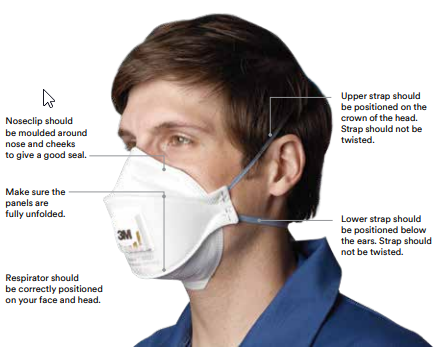
Disposable respirators are most effective when there is a good seal between the edges of the respirator and your face. The instant this seal is broken, protection is compromised as contaminated air can leak in through any gaps.
These fitting instructions must be followed each time a 3M™ Aura™ Particulate Respirator 9300A+ Series is worn.

Make sure that your face is clean shaven. Respirators should not be worn with stubble, beards or other facial hair under the area of the face seal as these can prevent a good seal to the face.
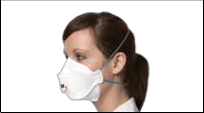
Make sure that long hair is tied back and jewellery is removed so that it does not interfere with the seal to the face.
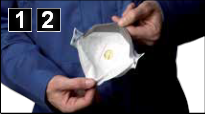
1. With the reverse side up and using the tab, separate the top and bottom panels of the respirator to form a cup shape. Bend slightly at the centre of the noseclip.
2. Ensure that both panels are fully unfolded.
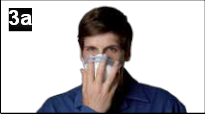
3a. Cup the respirator in one hand with the open side towards your face.

3b. Take both straps in your other hand. Hold the respirator under your chin, with the nosepiece facing upwards and pull the straps over your head.
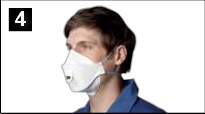
4. Locate the upper strap across the crown of the head and the lower strap below your ears. The straps must not be twisted. Adjust the top and bottom panels for a comfortable fit, ensuring that the panels and tab are not folded in.
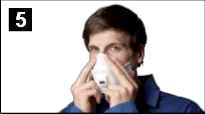
5. Using both hands, mould the noseclip to the shape of the nose to ensure a close fit and a good seal. The respirator may not fit as well if you pinch the noseclip using one hand. Use two hands.

6. Perform a fit-check by covering the front of the respirator with both hands taking care not to disturb its fit.
- If you’re using an unvalved respirator, exhale sharply.
- If you’re using a valved respirator, inhale sharply.
- If air leaks around the nose, readjust the noseclip to eliminate leakage then repeat the fit check. If air leaks at the respirator edges, work the straps back along the sides of the head to eliminate leakage then repeat the fit check.
- If you cannot achieve a proper fit, DO NOT enter the hazardous area. Consult your supervisor.



